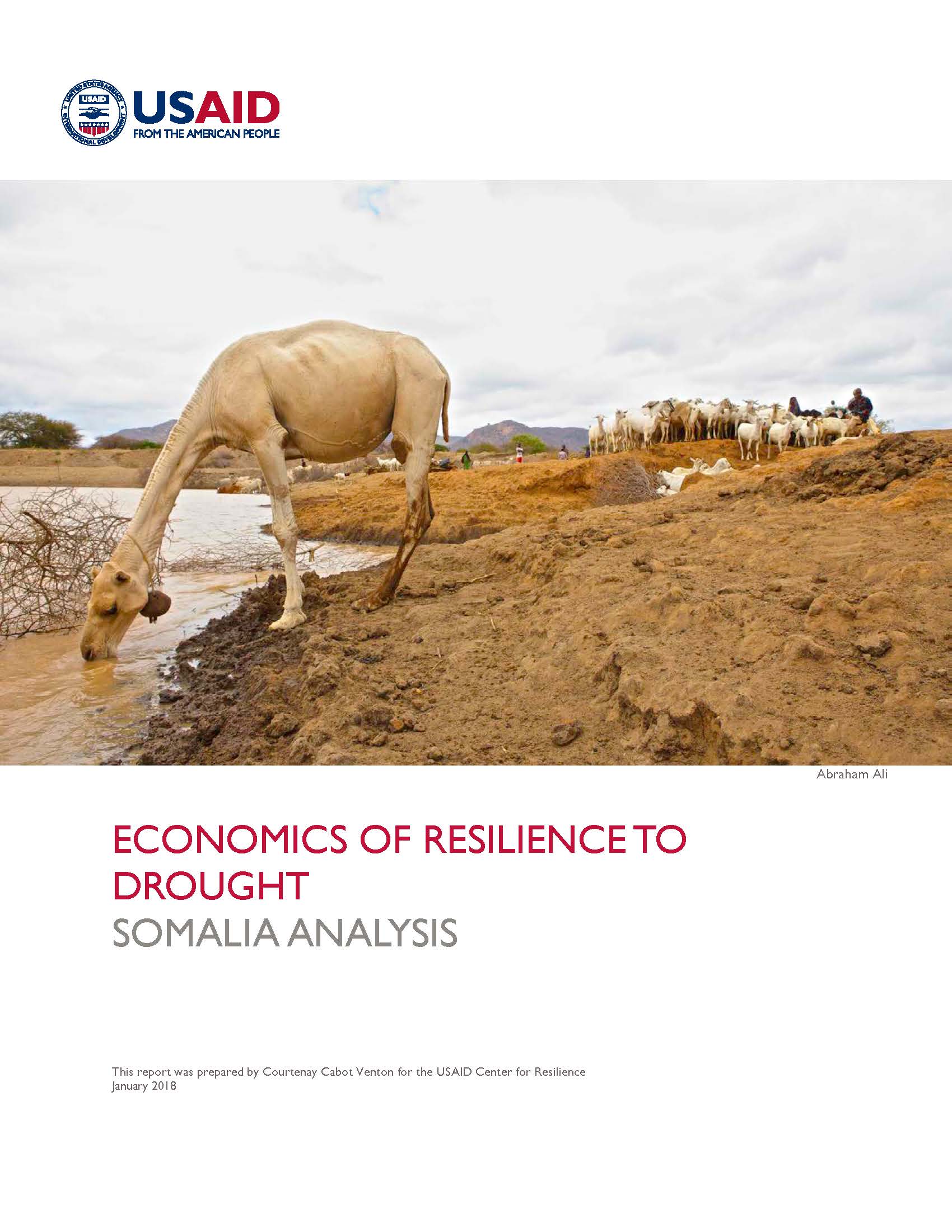Speeches Shim
A recent study commissioned by USAID demonstrates that investing in a more proactive response to avert humanitarian crises could reduce the cost to international donors by 30%, whilst also protecting billions of dollars of income and assets for those most affected.
The aim of this study is to investigate the impact of an early humanitarian response and resilience building on humanitarian outcomes in Somalia, both in terms of cost savings, as well as the avoided losses that can result from a more proactive response. The study investigates existing data and empirical evidence, and uses this to model the relative costs of different response scenarios.
Annex A and Annex B are available for download here
The impacts of drought on households are complex and interrelated, with spikes in need arising from a combination of physical changes to rainfall, fodder and vegetation, price changes in local markets, as well as other factors such as the quality of institutional response and conflict, for example. Further, high impacts of drought in one year can have strong effects on households’ abilities to cope in subsequent years.
It is very hard to measure this complex web of interactions and outcomes empirically. Hence, this analysis combines empirical evidence with the Household Economy Approach (HEA) to model the potential impact of different response scenarios over 15 years, for a population of 3.4 million across Somalia. The model is dynamic, allowing impacts in one year to carry forward into subsequent years, and hence gives a nuanced prediction of how different interventions may affect humanitarian need over time.
Key Findings
- An early humanitarian response would save an estimated US$220 million on cost of humanitarian response alone over a 15-year period. When avoided income and livestock losses are incorporated, an early humanitarian response could save US$460 million, or an average of US$31 million per year.
- Safety net programming at a transfer level of US$270 per household reduces the net cost of humanitarian response, saving an estimated US$115 million over 15 years over the cost of a late response. When this figure is adjusted to account for the benefits of the transfer beyond filling the food deficit, a safety net scenario saves US$318m over the cost of a late response. When avoided losses are incorporated, a safety net transfer could save US$595 million, or an average of US$40 million per year.
- A resilience building scenario that results in an increase in income of US$405 per household reduces the net cost of humanitarian response by an estimated US$155 million over 15 years over the cost of a late response. When this figure is adjusted to account for the benefits of the transfer beyond filling the food deficit, a resilience scenario saves US$494 million over the cost of a late response.
- When avoided losses are incorporated, resilience building could save US$794 million, or an average of US$53 million per year.
- Investing in early response and resilience measures yields average benefits of $2.8 for every $1 invested.
- When these estimates are applied to total U.S. Government (USG) spending on emergency food aid in Somalia, the USG could have saved on average US$153 million over 15 years in direct cost savings, a savings of 16 percent of total emergency spend.


Comment
Make a general inquiry or suggest an improvement.